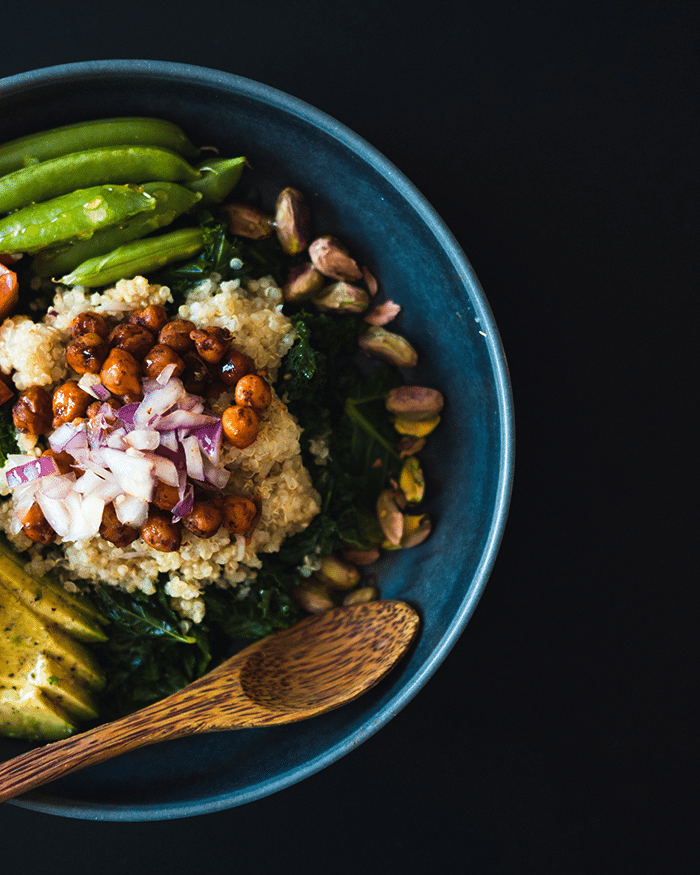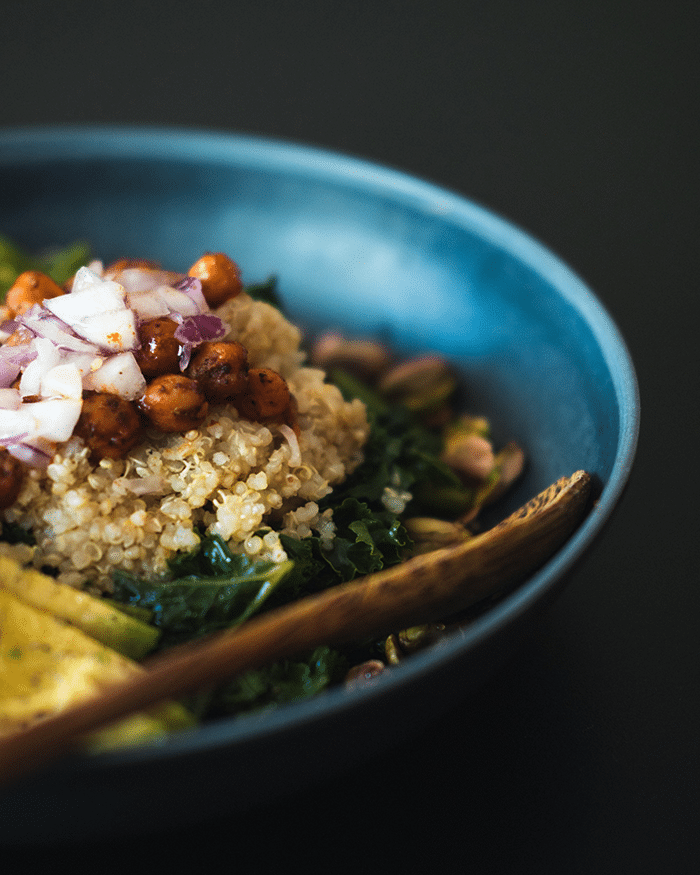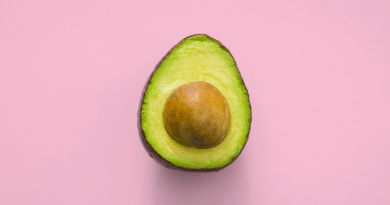Exploring the Benefits of Ancient Grains: Rediscovering Quinoa, Amaranth, and Teff
Ancient grains refer to a group of grains that have been cultivated for thousands of years, dating back to ancient civilizations.
These grains have been a staple in the diets of various cultures around the world and have recently gained popularity due to their exceptional nutritional value and unique characteristics.
Unlike modern hybridized grains, ancient grains have remained largely unchanged over time, preserving their natural properties and health benefits.
Importance of quinoa, amaranth, and teff
Among the wide array of ancient grains, quinoa, amaranth, and teff have emerged as exceptional choices for both culinary and nutritional purposes.

These grains have garnered significant attention and praise due to their outstanding nutritional profiles, versatility in cooking, and potential health benefits. Their consumption has surged as people rediscover their remarkable properties and seek alternatives to traditional grains.
Purpose of the article
The purpose of this article is to explore and shed light on the benefits of three prominent ancient grains: quinoa, amaranth, and teff. By delving into their nutritional composition, health advantages, culinary uses, and environmental sustainability, we aim to provide a comprehensive understanding of why these grains have gained such recognition in recent years.
Whether you are a health-conscious individual, a culinary enthusiast, or someone curious about diversifying your diet, this article will serve as a valuable resource to rediscover the wonders of quinoa, amaranth, and teff.
Quinoa: A Nutritional Powerhouse
Quinoa, scientifically known as Chenopodium quinoa, is an ancient grain native to the Andean region of South America. It has been cultivated for thousands of years and was considered a sacred crop by the Incas.
Quinoa gained worldwide recognition in recent decades for its exceptional nutritional value and versatility in cooking.
Nutritional composition
Quinoa stands out among grains due to its impressive nutritional composition. It is rich in carbohydrates, dietary fibre, and plant-based protein. Additionally, quinoa contains healthy fats, vitamins, minerals, and antioxidants, making it a highly nutritious food choice.
Health benefits of Quinoa
High protein content
Quinoa is renowned for its high protein content, making it a valuable source of plant-based protein for vegetarians and vegans. It contains all nine essential amino acids, including lysine, which is often limited in other plant-based foods. This makes quinoa a complete protein source and a valuable addition to a balanced diet.
Essential amino acids
The essential amino acids present in quinoa play crucial roles in various bodily functions. They contribute to muscle repair and growth, support immune function, and aid in the production of enzymes and hormones.
Rich in vitamins and minerals
Quinoa is a good source of several essential vitamins and minerals, including magnesium, phosphorus, folate, and vitamin B6. These nutrients are involved in energy production, bone health, brain function, and cell regeneration.

Gluten-free
One of the notable benefits of quinoa is that it is naturally gluten-free. This makes it an excellent grain alternative for individuals with gluten sensitivity or celiac disease, enabling them to enjoy a diverse range of dishes without compromising their dietary needs.
Potential in managing chronic diseases
Research suggests that incorporating quinoa into the diet may have positive effects on managing chronic diseases such as diabetes and cardiovascular conditions. Its low glycemic index and high fibre content contribute to stable blood sugar levels and improved heart health.
Culinary versatility
Quinoa’s versatility in the culinary world is another reason for its popularity. It has a mild, nutty flavour and a slightly chewy texture. Quinoa can be cooked and used as a base for salads, side dishes, stir-fries, and even desserts. It adapts well to various flavours and can be incorporated into both savoury and sweet recipes, offering endless culinary possibilities.
Sustainable cultivation
Quinoa cultivation is environmentally friendly and sustainable. It requires minimal water compared to other crops and can thrive in diverse climates and soil conditions. Additionally, quinoa plants are resistant to pests and diseases, reducing the need for pesticides and herbicides. The sustainable cultivation practices associated with quinoa contribute to its appeal as a responsible choice for both health-conscious consumers and those concerned about the environment.
Amaranth: A Forgotten Superfood
Amaranth, often referred to as a “forgotten” or “ancient” grain, is a plant native to Central and South America. It has been cultivated for thousands of years and was a staple food for the Aztecs and Incas. Amaranth is technically a pseudo-cereal, as it is not a member of the grass family like wheat or rice, but its nutritional profile and culinary versatility make it comparable to traditional grains.
Nutritional profile of Amaranth
Amaranth is celebrated for its exceptional nutritional content. It is a rich source of carbohydrates, dietary fibre, and high-quality protein. In fact, amaranth contains higher protein levels compared to most other grains, making it a valuable addition to a balanced diet. Additionally, amaranth is abundant in minerals such as calcium, iron, magnesium, and phosphorus, as well as vitamins such as vitamin C, vitamin E, and several B vitamins.

Health advantages of Amaranth
High protein content
The significant protein content in amaranth contributes to its reputation as a nutritional powerhouse. It contains all the essential amino acids, making it a complete protein source. This makes amaranth particularly beneficial for individuals following vegetarian or vegan diets, as it provides a diverse array of amino acids necessary for various bodily functions.
Rich in dietary fibre
Amaranth is an excellent source of dietary fibre, which plays a vital role in digestive health. Adequate fibre intake supports regular bowel movements, helps maintain healthy cholesterol levels, and promotes feelings of fullness, aiding in weight management.
Antioxidant properties
Amaranth contains a range of antioxidants, including phenolic compounds and vitamin E. These antioxidants help protect the body against oxidative stress, reducing the risk of chronic diseases and promoting overall well-being.
Potential cholesterol-lowering effects
Studies suggest that the unique composition of amaranth, particularly its high levels of plant sterols, may contribute to lowering LDL cholesterol levels. Regular consumption of amaranth as part of a balanced diet could have positive implications for cardiovascular health.
Culinary uses and recipes
Amaranth offers versatility in the kitchen, and its nutty flavour adds a pleasant taste to various dishes. It can be cooked and used as a base for porridges, salads, soups, and side dishes. Amaranth flour can be used as a gluten-free alternative in baking, providing a nutritious option for those with gluten sensitivities. Additionally, popped amaranth can be used as a topping for cereals, yogurt, or desserts, adding a delightful crunch.
Environmental sustainability
Amaranth cultivation is considered environmentally sustainable due to its efficient use of resources. The plant is highly resilient, requiring minimal water and exhibiting resistance to pests and diseases. Moreover, amaranth’s ability to grow in diverse climates and soil conditions makes it an attractive crop for sustainable agriculture. Its low environmental impact and nutritional benefits position amaranth as a responsible choice for both personal health and environmental consciousness.
Teff: The Ancient Grain with Unique Qualities
Teff, scientifically known as Eragrostis tef, is an ancient grain native to Ethiopia. It has been a fundamental part of Ethiopian cuisine and culture for thousands of years. Teff is the smallest grain in the world, but its nutritional value and versatility make it a significant player in the realm of ancient grains.
Nutritional value of Teff
Despite its small size, teff packs a powerful nutritional punch. It is a rich source of complex carbohydrates, dietary fibre, and essential minerals. Teff is also naturally gluten-free, making it an excellent alternative for those with gluten sensitivities or celiac disease. Additionally, teff contains notable amounts of protein, healthy fats, and vitamins such as vitamin C, vitamin B6, and vitamin E.
Health benefits

Gluten-free alternative
Teff’s gluten-free nature makes it a suitable choice for individuals with gluten intolerance or those following a gluten-free diet. It provides a valuable grain option that allows people to diversify their diet while avoiding gluten-related complications.
Excellent source of iron and calcium
Teff is exceptionally rich in iron, an essential mineral involved in oxygen transport and energy production. Incorporating teff into the diet can help prevent iron deficiency and related conditions such as anemia. Additionally, teff is an excellent source of calcium, contributing to bone health and supporting muscle and nerve function.
Blood sugar management
Teff has a low glycemic index, meaning it releases glucose into the bloodstream gradually. This characteristic makes teff beneficial for managing blood sugar levels, making it suitable for individuals with diabetes or those seeking to maintain stable blood sugar levels.
Weight management
The combination of teff’s high fibre content and slow-release carbohydrates can contribute to feelings of fullness and satiety. Including teff in meals can help control appetite, support healthy weight management, and prevent overeating.
Culinary applications and traditional dishes
Teff is a versatile grain with various culinary applications. It can be ground into flour and used for baking bread, pastries, and pancakes. In Ethiopian cuisine, teff flour is the primary ingredient in injera, a spongy and tangy flatbread that serves as a staple food. Teff grains can also be cooked and used as a base for porridges, side dishes, or added to soups and stews.
Sustainable production methods
Teff is known for its adaptability to diverse growing conditions and its ability to thrive in both arid and wet regions. It requires less water compared to many other grains and is relatively resistant to pests and diseases. Moreover, teff’s short growing cycle allows for more frequent harvests, making it an efficient and sustainable crop. These factors contribute to teff’s appeal as a grain with minimal environmental impact and sustainable production methods.
Comparing the Three Ancient Grains
When comparing quinoa, amaranth, and teff, all three ancient grains offer impressive nutritional profiles.
Quinoa stands out for its high protein content and essential amino acids, making it a valuable source of plant-based protein.
Amaranth follows closely, also providing significant levels of protein along with dietary fibre and a range of vitamins and minerals.
Teff, although small in size, offers a good amount of complex carbohydrates, fibre, and essential minerals like iron and calcium. Each grain brings its unique nutritional benefits, and incorporating a variety of these grains into one’s diet can contribute to a well-rounded nutrient intake.
Culinary uses and versatility
Quinoa, amaranth, and teff offer diverse culinary possibilities. Quinoa’s mild flavour and delicate texture make it suitable as a base for salads, grain bowls, and pilafs.
It blends well with various ingredients and can be used in both savoury and sweet dishes. Amaranth’s nutty taste and slightly chewy texture make it ideal for porridges, baked goods, and even as a thickener for soups or sauces.
Teff’s earthy flavour works well in injera, bread, porridge, and as a flour for baking. All three grains can be used as substitutes for rice, pasta, or other grains in numerous recipes, providing versatility and adding a unique twist to meals.
Accessibility and availability
Quinoa has gained widespread popularity and is readily available in most grocery stores, health food stores, and online markets.
Amaranth is also increasingly accessible, although its availability may vary depending on the region. Teff, being less known in some parts of the world, may require seeking out specialty stores or online sources that cater to Ethiopian or African cuisine. However, the growing awareness of ancient grains has led to increased availability and ease of access for all three grains in many areas.
Environmental impact and sustainability
In terms of environmental impact, all three ancient grains have positive attributes. Quinoa, amaranth, and teff are generally considered more sustainable than large-scale monocrops like wheat or corn.
They require less water and have natural resistance to pests, reducing the need for chemical interventions.

Additionally, these grains have the potential to be grown using organic practices and contribute to crop diversification, which benefits soil health and biodiversity. When selecting these grains, opting for organic and sustainably sourced options can further support environmentally conscious choices.
Considerations for different dietary needs
All three ancient grains offer benefits for various dietary needs. Quinoa and amaranth, being gluten-free, are suitable alternatives for individuals with gluten sensitivities or celiac disease. Teff, another gluten-free grain, can provide similar benefits.
Quinoa and amaranth stand out as excellent plant-based protein sources, making them valuable for vegetarians and vegans. Teff, with its iron and calcium content, can be particularly beneficial for those seeking to boost their intake of these minerals.
Additionally, the high fibre content in all three grains supports digestive health and can aid in weight management. It is important to consider individual dietary needs and preferences when incorporating these grains into one’s diet, ensuring they align with personal health goals and restrictions.
Incorporating Ancient Grains into Your Diet
Tips for selecting and buying ancient grains
Look for certified organic options to ensure the grains are free from pesticides and genetically modified organisms (GMOs).
Read labels and check for quality indicators, such as whole grain products and minimal processing.
Consider purchasing from reputable brands or trusted sources that prioritize sustainable and ethical practices.
Explore local markets or specialty stores that offer a wide selection of ancient grains, including quinoa, amaranth, and teff.
Online retailers can also provide a convenient option for purchasing these grains, often offering a variety of brands and packaging sizes.
Storage and preparation methods
Store ancient grains in airtight containers in a cool, dry place to maintain freshness and prevent moisture absorption.
Before cooking, rinse the grains thoroughly to remove any residual dust or debris.
Follow the package instructions or use a ratio of 1 cup of grain to 2 cups of water for cooking.
For added flavour, consider cooking grains in vegetable or chicken broth instead of plain water.
Cooking times may vary depending on the grain, so follow the recommended cooking times provided on the packaging or in recipes.
Cooking ideas and recipes
Quinoa:
- Quinoa salad with fresh vegetables and a tangy vinaigrette.
- Quinoa breakfast bowl with fruits, nuts, and a drizzle of honey.
- Quinoa stuffed bell peppers or mushrooms for a savoury and filling meal.
Amaranth:
- Amaranth porridge topped with berries, nuts, and a sprinkle of cinnamon.
- Amaranth granola bars for a nutritious and portable snack.
- Amaranth pilaf cooked with vegetables and herbs as a flavourful side dish.
Teff:
- Teff injera, the traditional Ethiopian flatbread, served with a variety of stews and dips.
- Teff pancakes or waffles for a wholesome breakfast option.
- Teff grain bowl with roasted vegetables, protein of choice, and a zesty dressing.
Potential challenges and how to overcome them
Texture: Some people may find the texture of ancient grains different from traditional grains. Experiment with different cooking methods or incorporate them into dishes where the texture complements other ingredients.

Taste: If you’re new to ancient grains, start by combining them with familiar flavours and gradually explore different seasonings and spices to enhance their taste.
Digestive sensitivity: If you experience digestive discomfort when consuming certain grains, start with smaller portions and gradually increase your intake to allow your body to adjust. Cooking grains thoroughly and soaking them beforehand can also help improve digestibility.
Suggestions for incorporating ancient grains in various meals
Breakfast:
- Add cooked quinoa, amaranth, or teff to smoothies for a nutrient boost.
- Make overnight oats with a mix of rolled oats and quinoa or amaranth for added texture and nutrition.
- Sprinkle cooked teff over yogurt or cereal for a crunchy and nutritious topping.
Lunch and Dinner:
- Use ancient grains as a base for grain bowls, mixing them with roasted vegetables, protein, and a flavourful sauce.
- Incorporate cooked grains into salads, adding a hearty and nutritious element.
- Make grain-based side dishes, such as quinoa or amaranth pilaf, to accompany main courses.
Snacks and Desserts:
- Prepare energy bars or granola bites using a combination of ancient grains, nuts, dried fruits, and sweeteners like honey or maple syrup.
- Bake cookies or muffins using ancient grain flours as a nutritious alternative to refined flours.
Conclusion: Ancient Grains
Recap of the benefits of quinoa, amaranth, and teff
Quinoa, amaranth, and teff have all demonstrated remarkable nutritional profiles and health benefits. Quinoa shines as a protein powerhouse with essential amino acids, while amaranth provides protein, dietary fibre, and antioxidant properties. Teff, the smallest of the three, offers an array of complex carbohydrates, iron, and calcium.
These ancient grains are gluten-free alternatives that can be valuable for individuals with dietary restrictions or specific health needs. Their versatility in the kitchen allows for a wide range of culinary creations, from savoury dishes to baked goods and beyond.
Encouragement to explore ancient grains
As we rediscover the benefits of ancient grains like quinoa, amaranth, and teff, it is exciting to incorporate these nutritious options into our diets. By embracing these grains, we not only diversify our meals but also support sustainable agriculture and make conscious choices for our health.
Experimenting with new flavours and textures can be a delightful culinary adventure, bringing a fresh perspective to our cooking and eating habits.

Future potential and research directions
While quinoa, amaranth, and teff have gained popularity in recent years, there is still much to explore in terms of their potential benefits and uses.
Ongoing research aims to delve deeper into the specific health impacts of these grains, including their role in managing chronic diseases and promoting overall well-being.
Further investigations into their environmental sustainability and cultivation methods will also contribute to a more comprehensive understanding of their impact on our planet.
Closing thoughts
In conclusion, the rediscovery of ancient grains such as quinoa, amaranth, and teff offers us a chance to reconnect with our food heritage while embracing the numerous health benefits they provide. These grains have stood the test of time and are now being celebrated for their nutritional value, culinary versatility, and sustainable characteristics.
By incorporating quinoa, amaranth, and teff into our diets, we can nourish our bodies, explore new flavours, and contribute to a more sustainable food system. So let’s embark on this journey and savour the benefits of ancient grains as we nourish ourselves and cultivate a healthier future.




